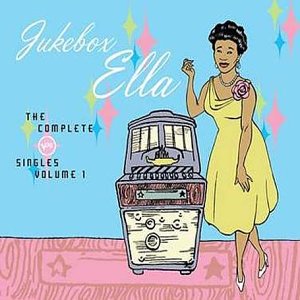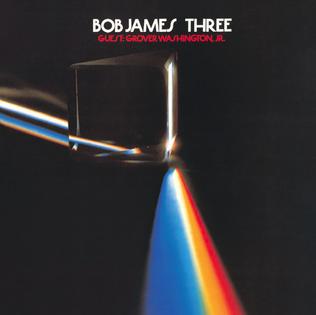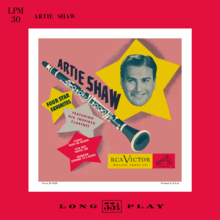
"In the Mood" is a popular big band-era jazz standard recorded by American bandleader Glenn Miller. "In the Mood" is based on the composition "Tar Paper Stomp" by Wingy Manone. The first recording under the name "In the Mood" was released by Edgar Hayes & His Orchestra in 1938.

Unforgettable … with Love, also known as simply Unforgettable, is the twelfth studio album by American singer Natalie Cole. Released on June 11, 1991, the album includes covers of standards previously performed by her father, Nat King Cole. It was also her debut for Elektra Records, after being given her release from EMI Records.

Jukebox Ella: The Complete Verve Singles, Vol. 1 is a 2003 compilation album by the American jazz singer Ella Fitzgerald. The album contains all the singles Fitzgerald recorded for Verve Records label between 1956 and 1965.

Solo Flight: The Genius of Charlie Christian is a 1972 double album collecting many of the few recordings that captured performances by Charlie Christian. Most of the selections are from sessions with Benny Goodman's bands. Until the advent of CD, it was considered to be the definitive "Charlie Christian" collection On some tunes, the producers spliced various takes together to include more of Christian's solos, or to create a better overall tune.

Just for a Thrill is the twenty-third studio album of country music artist Ronnie Milsap. It was released in 2004 under Image Records, his first for the label. The album consisted of fourteen recordings of pop and jazz standards.

Frank Sinatra's Greatest Hits! is the first compilation by American singer Frank Sinatra released on his own Reprise Records. It concentrates on mostly single releases from the mid to late 1960s, which fluctuates between adult contemporary pop and jazzy swing. The album opens up with Sinatra's recent number one hit "Strangers in the Night" and continues through the varied styles of music Sinatra recorded in the 60s, from easy listening ballads like "It Was a Very Good Year" and "Softly, as I Leave You" to contemporary pop like "When Somebody Loves You" and "That's Life". Greatest Hits was a modest hit, peaking at #55 on the album charts in late 1968. A second volume was issued in 1972, Frank Sinatra's Greatest Hits, Vol. 2. Both albums have since been supplanted with newer and more cohesive compilations.

The Song Is June! is a 1958 album by June Christy recorded with Pete Rugolo's Orchestra. It was reissued in 1997 as a double CD with Off-Beat.

December is the fifth studio album by trumpet player Chris Botti. It was released by Columbia Records on October 22, 2002. Botti himself provided vocal on "Perfect Day".

Three is the third album by jazz musician Bob James.

Heads is the fifth album by the jazz musician Bob James, released in October 1977. It was his first album released on his newly formed Tappan Zee label, which was distributed by Columbia Records. All of his Tappan Zee albums are distributed by E1 Music. The album reached number one on the Billboard Jazz Albums chart.

After Hours is the fifth and final solo studio album by Glenn Frey, released in 2012, four years before his death. The album is very different from Frey's previous rock albums and features material from the Great American Songbook. The album charted at number 116 in the U.S. and number 92 in the UK. After Hours was Frey's first new studio solo album in 20 years since 1992's Strange Weather, which was a commercial disappointment.

Dear Diz (Every Day I Think of You) is an album by Cuban jazz trumpeter Arturo Sandoval that won the Grammy Award for Best Large Jazz Ensemble Album in 2013. The album is Sandoval's tribute to his friend, Dizzy Gillespie. Musicians on the album include Gary Burton, Eddie Daniels, Joey DeFrancesco, and Bob Mintzer.

Inspiration: A Tribute to Nat King Cole is a studio album by George Benson. The album was released by Concord Jazz on June 4, 2013. It peaked at #89 on the Billboard album chart.

For Sure is an album led by trumpeter Woody Shaw which was recorded in 1979 and released on the Columbia label.

The Kenton Era is a compilation album by pianist and bandleader Stan Kenton featuring recordings from 1940 to 1954 which was originally released in two limited edition box sets, as fifteen 7 inch 45 rpm discs and four 12 inch LPs, on Capitol in 1955.

Come Tomorrow is the ninth studio album by the American rock band Dave Matthews Band, and was released on June 8, 2018. The album is their first since 2012's Away from the World.

3 is the third and final collaborative album by Stanley Clarke and George Duke, released in 1990 on Epic Records. The album peaked at No. 7 on the US Billboard Contemporary Jazz Albums chart.

Sandokushi also known as triviṣa-itihāsa, is the sixth studio album by Japanese musician Ringo Sheena released on May 27, 2019, through EMI Records and Universal Music Japan. Similarly to her previous studio album Hi Izuru Tokoro (2014), the album is a compilation studio album compiling singles released from 2014 to 2019, as well as new compositions.

Stars is the sixth studio album by American singer-songwriter Janis Ian, and the first of her seven for Columbia Records. Ian had previously had a three-year hiatus from the music industry since her 1971 album Present Company. In two years away from the music business, Ian wrote over 100 songs after moving to Los Angeles. She returned to play at the Philadelphia Folk Festival on August 17, 1973, and was signed by Columbia Records after several other companies rejected the songs she had written.

Legend is the ninth studio album by American singer John Legend. It was released on September 9, 2022, through John Legend Music Inc. and Republic Records.




















